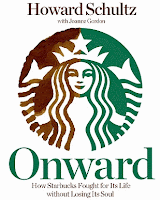- A charismatic, rock-star CEO?
- Huge efforts to build a visionary strategy, followed by a great program intended to catalyze organizational change?
- Powerful incentives to motivate all members of an organization?
- The quick adoption of cutting-edge technologies?
- State-of-the-art HR policies ?
Nope! Building greatness takes disciplined people, engaging in disciplined actions based on disciplined thought.
This is the astonishing conclusion of the in-depth analysis made by Jim COLLINS and his team.
Good to Great is based on the study of eleven American companies that, after a period of ordinariness, at some point made the leap to greatness (as measured by financial performance on the stock market).
The reasons why these companies succeeded in such a spectacular manner derive from a few simple principles:
- Level 5 Leaders. The research showed that Good-to-Great companies were lead by managers who shared two personality traits: a great personal humility and a very strong resolve for their company to achieve greatness.
- First Who, Then What. Obviously, you need a great team to build a great company. But what these companies did was first to recruit great people, and then to define a strategy.
- The Stockdale Paradox. Good-to-Great companies were able to confront the brutal facts. For example, one of them was able to understand that its core activity was going to disappear and that it needed to redefine its core business. But while acknowledging the tough reality, these organizations never lost faith that in the end, they would prevail. COLLINS called this attitude “the STOCKDALE paradox” after a US army hero. Admiral Jim STOCKDALE was a war prisoner in Vietnam for eight years. He survived and helped his fellow prisoners survive too, by being very realistic about short-term outcomes (don't hope you'll be home for Christmas) yet never stopping to believe that they would be free in the end.
- The Hedgehog Concept. While a fox is very smart an can implement many strategies, the hedgehog has only one, very simple strategy (rolling up to become a sphere full of spikes) and uses it very consistently. Good-to-Great companies are much more like hedgehogs than like foxes. They find out what they can be the best in the world at, what they are passionate about, and what drives their economic engine. These are simple things, nothing sophisticated. Then, they just focus on this core concept that drives all their actions.
- A Culture of Discipline. In Good-to-Great companies, discipline has nothing to do with tyranny or bureaucracy: it is a mix of liberty and responsibility. Discipline also means staying focused on the hedgehog concept, even if it means renouncing to apparent opportunities.
- Technology as an Accelerator. Good-to-Great companies do not feel the need to be the first to adopt new technologies. They take the time to understand how they can use technology in a way that is consistent with their hedgehog concept.
A Solid Methodology
Jim COLLINS used to teach at Stanford. To write this book, he worked with a strong team that spent several years collecting and analyzing huge quantities of relevant data. The statistical significance of their method was validated by two distinguished professors: a statistician and a mathematician.
The skeptical reader can find details about this solid methodology in the notes and appendixes.
Good to Great and the Social Sectors
 Working in healthcare, I was particularly interested by “Good to Great and the Social Sectors”, a short monography COLLINS wrote to accompany “Good to Great”.
Working in healthcare, I was particularly interested by “Good to Great and the Social Sectors”, a short monography COLLINS wrote to accompany “Good to Great”. COLLINS explains why, for non-profit organizations, being more “business-like” is not a relevant approach: after all, most companies are either mediocre or merely good anyway.
We should not try to imitate the world of business but embrace (and adapt) the principles that can lead to greatness.
How is this book useful to HR practitioners?
Good to Great challenges some beliefs that are widely shared amongst HR professionals:
- We often think that we should select the professionals that best fit our organization's strategy. Instead, maybe we should first hire the best professionals and then, define the strategy with them. The “First Who, Then What” principle shows that recruiting is the first step on the path to success. Good news for HR!
- We are generally interested in the theme of Motivation. COLLINS thinks that it is useless: in his view, if you hire the right people and do not make stupid or unfair decisions, they will always be motivated.
- The idea of “Level 5 leaders” may challenge our common approach to leadership. Maybe the best leaders are not the most charismatic.
- Personally, I think I need to use the hedgehog concept. The book has made me understand how discipline and focus are at least as important as creativity and innovation.
- "Good to Great - Why some Companies Make the Leap... and Others Don't"
- By Jim COLLINS
- Harper Business
- 218 pages (+appendixes)
- Available on Amazon.com: Good to Great: Why Some Companies Make the Leap... and Others Don't
- "Good to Great and the Social Sectors- Why Business Thinking Is Not the Answer"- A Monograph to Accompany Good to Great
- By Jim COLLINS
- 35 pages
- Available on Amazon.com: Good to Great and the Social Sectors: A Monograph to Accompany Good to Great
This is the first time that I have posted a comment about a book that was not recommended by a fellow Human Resource professional. I simply felt the urge to read it because it was cited as a must-read in many of the other HR books I have read. I'm happy I made this choice !
Nonetheless, if you are an HR practitioner, please do not hesitate to send me your book recommendations (by e-mail or via @HRbooks on Twitter) or to share your thoughts about Good to Great.












